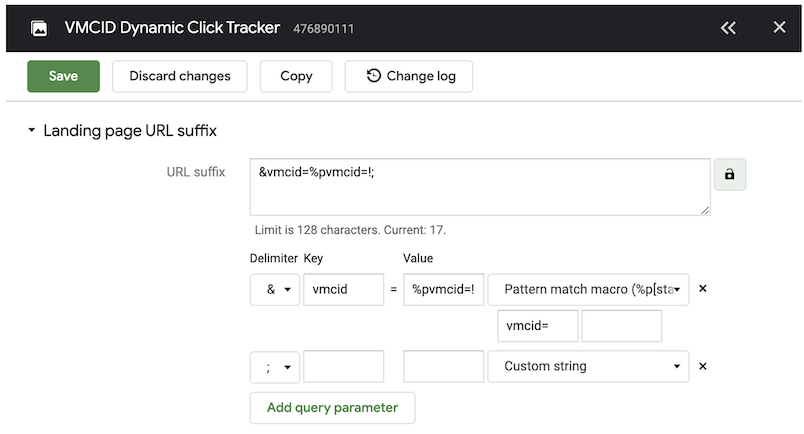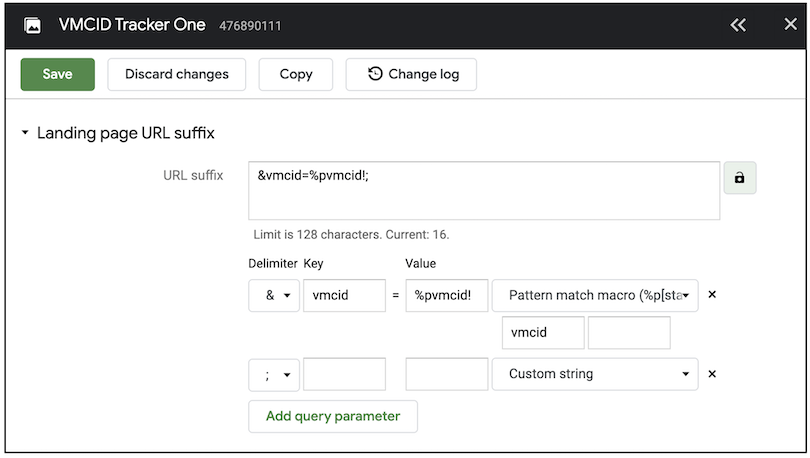Yahoo Click ID in Google Campaign Manager Ad Server¶
Abstract¶
Describes how to enable Enhanced Attribution for Yahoo Click ID in the Google Campaign Manager ad server. Topics include 3rd Party Hosted (Ad Tag) and Yahoo Hosted (Img 1x1 Click Tracker) implementations in Google Campaign Manager 360.
How It Works¶
To implement Enhanced Attribution for Yahoo campaigns that use use Google Campaign Manager 360 (fka DCM) for tracking or ad serving, the only change needed is to regenerate the dynamic click tracker or ad tag, so that it will include the key-value pair that represents the Yahoo VMCID parameter vmcid= and the click ID macro ${CC}.
The steps to implement this change in Google Campaign Manager 360 are described in the sections below.
Add VMCID Click ID Macros to Google CM360 Dynamic Click Trackers¶
Step 1: Update the Placement with the vmcid=${CC} key-value pair.
Go to Campaigns and select the current campaign that the dynamic click trackers are created under and select the Placement (for example: VMCID Test Placement):

Click the Placement and scroll to the Tag defaults section:

Expand the Tag Defaults section and scroll to the Additional key-values sections and enter vmcid=${CC}. This is the VMCID parameter and click ID macro that will be added to your dynamic click tracker tags.
See the Google Help Center article for reference:

Save the Placement.
Step 2 Update the Dynamic click tracker’s Landing page URL suffix with the vmcid parameter and the click ID macro ${CC} and the DCM pattern matching macro %p.
Select the Dynamic click tracker under that Placement from the Campaign screen:
Click the Dynamic click tracker (example VMCID Dynamic Click Tracker) and scroll to the Landing page URL suffix section:
Expand the Landing page URL suffix section to add the vmcid parameter and click ID macro. Since this is the landing page URL the expanded click ID value needs to appear here instead of the macro itself.
To do this, use CM360/DCM’s %p (pattern matching) macro to capture the expanded click ID macro value and include it in the landing page URL.
Use the following structure to add the URL suffix. Here’s a reference to the %p pattern matching macro in Google help docs.

Step 3 Download and send the tags to Yahoo so the new click trackers can replace the old ones.
The dynamic click tracker tags will look similar to the following and will include the additional key-value pair vmcid=${CC} as part of the click-through URL:
https://ad.doubleclick.net/ddm/trackclk123/456;dc_trk_aid=123456;dc_trk_cid=123456;vmcid=${CC};dc_lat=;dc_rdid=;tag_for_child_directed_treatment=;tfua=
The ${CC} macro will expand into a value that will represent the user in the Yahoo ad platform which will be passed within the query string when the user clicks on an ad. That value is then passed to the Dot tag placed across the advertiser site and used to track to a conversion.


